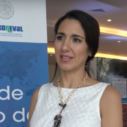
Search
Articles

Editorial 2 Issue – Dimensions
The Multidimensional Poverty Peer Network (MPPN) brings together high-level government representatives from all over the world whose shared objective is to eliminate poverty in their countries and who consider multidimensional indicators to be very powerful tools for achieving this goal.

What are the dimensions and indicators most commonly used by countries in their national MPIs?
In the following article, Diego Zavaleta presents the dimensions and indicators that the Latin American countries are using in the elaboration of their Indices of Multidimensional Poverty. It also identifies the main lessons that emerge from these experiences.

In Brief: Roundtable and dashboard for the reduction of poverty in Colombia
“In Brief” is a section of Dimensions magazine that provides short versions of the Multidimensional Poverty Peer Network’s policy briefings series. In this issue, we summarize a briefing on Colombia by Diego Zavaleta and Roberto Angulo.

Brief history of the measurement of multidimensional poverty in Latin America
María Emma Santos describes the region’s experience in measuring multidimensional poverty, which dates back forty years. Currently, seven of the eleven countries (or cities) with a national and official Multidimensional Poverty Index are in Latin America. This article is based on the second part of the OPHI working paper “Measuring Multidimensional Poverty in Latin America:” Previous Experience and the Way Forward

What is the aim of the MPPN? Reflections from the 2016 Annual Meeting
In June 2013, high-level representatives from 16 countries met in Oxford, United Kingdom to launch the Multidimensional Poverty Peer Network, a platform of countries aimed at eradicating poverty in its many dimensions. After almost four years, the network has grown to include 53 countries and 14 international organizations. What is it that has attracted this many participants? We asked some of the delegates.












